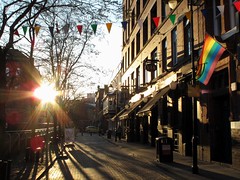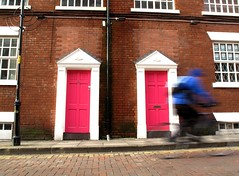We are the PIMMs Group. We have nothing to do with Pimm's, the drink, although, it stands to reason you should love us both equally. We are a group of students working on a Digital Marketing Communications Managementm (DMCM) project (We know. It's a mouthful. You can just say 'Digital MarComms'). Follow our progress through the next few months as we make waves in the digital world for a very important client!
Monday, 4 April 2011
Thursday, 24 March 2011
Northern Flower
Friday, 11 March 2011
A Little Lesson on Behavioural Economics
Thursday, 10 March 2011
Getting the Full Manchester Experience!
Deansgate Locks
Northern Quarter
Salford Quays
Spinningfields
Thursday, 24 February 2011
#SASCHOOL11 - Digital, Search and Social Media Marketing Event
James Hanson and Simon Alexander from MediaVest spoke about PPC (Pay Per Click) advertising and SEO (Search Engine Optimisation) - Below are some of the points they mentioned:
Google currently holds 70% US market share and 90% of the UK's market share. With other search engines such as Yahoo and MSN holding less than 10% between them but slowly growing their share is set to rise with the future merge of MSN and Yahoo.
A quote from Eric Schmidt (Google) "Microsoft, not Apple or Facebook, is the biggest rival Google has right now" - even though Google hold the largest search engine market share they still feel threatened by the smaller search engines as they are all constantly bringing out new tools and competing against each other to gain bigger market shares.
They also talked about how mobile is going to be big in 2011 - this was very useful because one of the aims for our Digital Marketing Communications Management project, based on Canal Street Manchester's LGBT community is to create a mobile friendly website.
All in all the event was very useful to help with our current Gay Village Manchester project and it has also given us an insight into how PPC, SEO and Social Media Marketing work within companies which will be useful for us once we have graduated and hopefully start working for a Digital Marketing agency.
Wednesday, 16 February 2011
Canal Street
Thursday, 10 February 2011
How can marketers make the most of mobile search?
The Tamar Mobile White Paper shows a rapid increase in mobile search use, especially among the 18-24 and 25-34 age groups with 14% of both searching on mobile every day. Last year the figures for the same groups were 5% and 8%.
The stats from the study show an overall increase in search usage, but the growth of mobile search shows how rapidly mobile internet adoption is growing:

While mobile search is still relatively small, at 3% of total search traffic, the data shows how rapidly it is growing.
So what can marketers do to make the most of mobile search?
- Take note of Google changes. For example, the introduction of Google Instant on a mobile could have a significant impact. It could be very useful for mobile users since fewer keystrokes would be required, and marketers would need to target 'early words' in search terms.
- Since many mobile searches are likely to revolve around local specific phrases, marketers need to incorporate this into keyword research and SEO strategies.
- Make sure you have mobile optimised landing pages. The hard work on attracting mobile search traffic will be wasted if you send users to a desktop site which provides mobile users with a poor experience. These pages should also be optimised for a range of mobile devices.
- Add a phone number to PPC ads, and prominent numbers on landing pages. This way mobile users can easily make contact for bookings etc. A freephone number would also help.
- Add prominent store locators / directions to local businesses. Multichannel retailers can drive customers into local stores by making it easy to find the nearest outlet.
- Separate mobile and desktop search campaigns. The data learned from desktop search campaigns will not necessarily transfer to mobile search, so campaigns need to be tailored to mobile users.
- Target local searchers with mobile AdWords. Restaurants and other local businesses can pick a location and target a radius around it to take advantage of local searches.
- Retailers need to follow mobile commerce best practice, including simplified navigation, nice big call to action buttons and, crucially, a checkout that has been optimised for mobile users.
Wednesday, 9 February 2011
Mobile Marketing Slides
Tuesday, 1 February 2011
Purple Papers
Wednesday, 26 January 2011
Merging Convenience and the User Experience


When we first met up with the client he was eager to discuss implementing a mobile strategy for the Canal Steet website, which is justified as 91% of users in the UK have a mobile phone that can access the internet. Furthermore, the LGBT community as a whole tend be early adopters of new technology.




